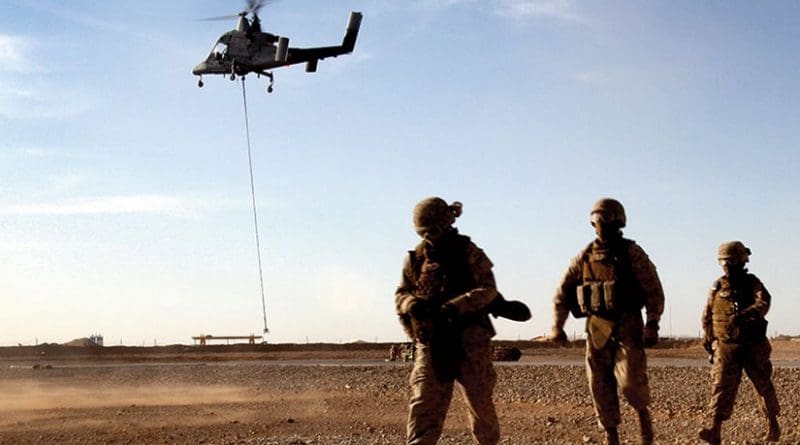The Future Of US Troops In Afghanistan: Assessing Potential Roles – Analysis
By IPCS
By Rajat Ahlawat*
In his new strategy for Afghanistan, US President Donald Trump recently decided on increasing the number of American troops in the country. He said a hasty withdrawal would create a power vacuum for the terrorists, which would pose a serious threat for the struggling Afghan security forces. Many previous reports have indicated that the majority of Afghan forces still lack independent operational capabilities and more ground-level advisors embedded within their units are required to provide advisory and assistance. The US military is also conducting ground and aerial counterterrorism operations against the Islamic State Khorasan (IS-K) and Taliban targets.
Given the current security situation in Afghanistan, in what roles are the new US troops expected to be deployed?
NATO’s Resolute Support (RS) mission is mainly divided into three categories :
- The Combined Security Transition Command – Afghanistan (CSTC-A) works throughout Afghanistan assisting the Afghan National Defense and Security Forces (ANDSF) with essential functions like planning and budgeting, civilian governance, strengthening the rule of law, and intelligence operations.
- The Train, Advise, Assist Commands (TAACs) are divided into six zones: North, South, East, West, Capital, and Air. They work with the Afghan forces on different levels of training, advisory, and assistance especially on the ground.
- The Task Forces (TFs) – of which there are two, TF Southwest and TF Southeast – comprise only US troops who conduct functionally-based security force assistance to “enable ANDSF to retain key terrain, disrupt insurgent networks, generate sustainable combat power, and set conditions for future operations.” TF Southwest also comprises 300 marines who were deployed in March 2017, which is indicative of a more combative role for the task forces.
Under the NATO mission, coalition advisors work on three levels with the Afghan forces:
- Level One: Advisors work in close proximity with the Afghan forces on a continuous basis, usually embedded within an Afghan unit.
- Level Two: Advisors work on a less frequent basis, depending normally on the capability of the Afghan forces, threat levels, and coalition resources.
- Level Three: Advisors are not co-located with the Afghan forces and communicate from a central location.
Previous US congressional reports have indicated a requirement for a higher number of Level One advisors, which also indicates that the majority of Afghan forces are still not fully capable of operating independently.
Gen John Nicholson Jr., commander of the US forces and the NATO mission in Afghanistan, noted in his February 2017 congressional testimony that there were adequate US forces for counterterrorism operations, but a few thousand more troops were needed for Train, Advise, Assist (TAA) missions. The limited numbers of Level One advisors was also reported to be the reason behind the brief seizure of Kunduz by the Taliban in September 2015. Understanding this limitation and the dynamics of the Taliban offensive in the region, the NATO mission increased the number of advisor troops in the north to 1600.
As of May 2017 , the NATO mission had a total of 13,576 coalition troops from 39 countries, of which the US contributed 6,941 troops, leaving approximately 4,000 US troops for counterterrorism operations.
The increase of 3,000 troops is likely to include airborne forces and marines along with additional aerial support such as F-16 fighters, A-10s and B-52 bombers, which are to be based in Qatar. An increase in fighter and bomber aircraft, along with the recent dropping in Nangarhar of the Massive Ordinance Air Blast (MOAB), the most powerful non-nuclear weapon in the US arsenal, shows the Trump administration’s increasing reliance on air strikes against hostile forces.
Approximately half of the new troops are expected to be from the 82nd Airborne Division’s 1st Brigade Combat Team (BCT), with 1st BCT troops also forming a major part of TF Southwest . The 82nd Airborne is an elite airborne infantry division specialising in combat assault operations in hostile areas, and is experienced in conducting operations in Iraq. These elite troops can be expected to assist and participate with the Afghan Special Forces in conducting missions against the IS-K and Taliban targets, assisted with an increased aerial support.
The US forces are also conducting counterterrorism operations, independently and with Afghan Special Forces, especially against IS-K and al Qaeda associates. In April 2017, the US lost a member of its Special Forces team and two Army Rangers while conducting operations against IS-K in Nangarhar, highlighting the existence and likely continuation of ground counterterrorism operations.
Though the US is yet to confirm the areas of deployment, most new troops are expected to undertake Level One TAA missions with Afghan forces. This suggests that a majority of the Afghan forces have limited independent operational capabilities. There is also a possibility that some new troops could be deployed to support counterterrorism operations under the US mission, working together with their Afghan counterparts. The accompanying focus on elite troops and airpower suggests that the US is attempting to break the current ‘stalemate’ in the Afghan security situation.
The new troops’ pattern of deployment, along with the levels of cooperation and assistance to their Afghan partners, could determine the long-term capacity for the development of the Afghan security forces.
*Rajat Ahlawat
Research Intern, IReS, IPCS
Email: [email protected]

